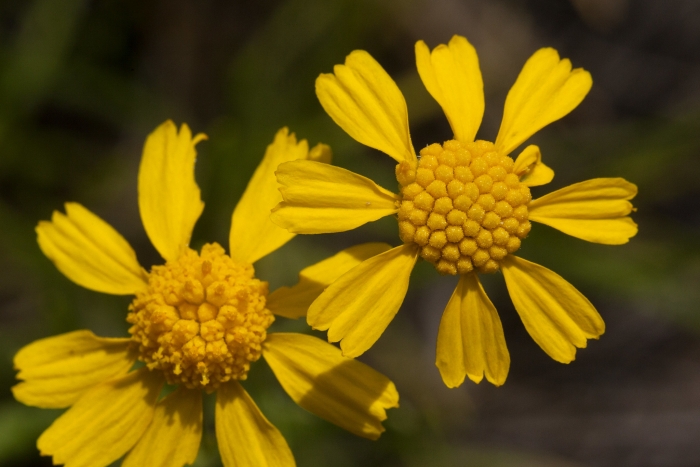Pingue Rubberweed
(Hymenoxys richardsonii)
Pingue Rubberweed (Hymenoxys richardsonii)
/
/

Patrick Alexander
CC0
Image By:
Patrick Alexander
Recorded By:
Copyright:
CC0
Copyright Notice:
Photo by: Patrick Alexander | License Type: CC0 | License URL: https://creativecommons.org/licenses/by-sa/2.0 | Uploader: Josve05a | Publisher: Wikimedia Commons |




















































Estimated Native Range
Summary
Hymenoxys richardsonii, commonly known as Pingue Rubberweed, is a perennial subshrub or herb native to open grasslands and alpine regions in the Rocky Mountains and Northern Great Plains into Canada. It is not typically found in forests. This plant is deciduous, with a growth habit that forms a low mound up to 12 inches tall and wide. The foliage is narrow and gray-green, and it produces bright yellow, daisy-like flowers from late spring to early fall, which are moderately showy and attract pollinators. Pingue Rubberweed is valued for its drought tolerance and ability to thrive in poor, rocky soils, making it a suitable choice for xeriscaping and naturalized areas.
In the garden, Pingue Rubberweed is used for rock gardens, border fronts, and as a ground cover in dry, sunny locations. It is appreciated for its long blooming season and its resilience in challenging conditions. It requires minimal maintenance once established, but it is important to avoid overwatering and to provide well-draining soil. While generally disease-free, it can occasionally suffer from root rot if conditions are too moist. There are no widely known popular cultivars of this species in the horticultural trade.CC BY-SA 4.0
In the garden, Pingue Rubberweed is used for rock gardens, border fronts, and as a ground cover in dry, sunny locations. It is appreciated for its long blooming season and its resilience in challenging conditions. It requires minimal maintenance once established, but it is important to avoid overwatering and to provide well-draining soil. While generally disease-free, it can occasionally suffer from root rot if conditions are too moist. There are no widely known popular cultivars of this species in the horticultural trade.CC BY-SA 4.0
Plant Description
- Plant Type: Subshrub, Herb
- Height: 0.6-1.2 feet
- Width: 0.25-0.5 feet
- Growth Rate: Moderate
- Flower Color: Yellow
- Flowering Season: Summer, Fall
- Leaf Retention: Deciduous
Growth Requirements
- Sun: Full Sun
- Water: Low, Medium
- Drainage: Slow, Medium
Common Uses
Butterfly Garden, Drought Tolerant, Low Maintenance, Showy Flowers
Natural Habitat
native to open grasslands and alpine regions in the Rocky Mountains and Northern Great Plains into Canada
Other Names
Common Names: Colorado Rubberweed, Pingue, Pingue Hymenoxys, Richardson’s Bitterweed, Colorado Rubberplant
Scientific Names: , Hymenoxys richardsonii, Picradenia richardsonii, Picradenia richardsonii var. floribunda, Actinea richardsonii, Actinella biennis, Picradenia biennis, Hymenoxys richardsonii var. utahensis, Actinella richardsonii, Hymenopappus liguliflorus
GBIF Accepted Name: Hymenoxys richardsonii (Hook.) Cockerell